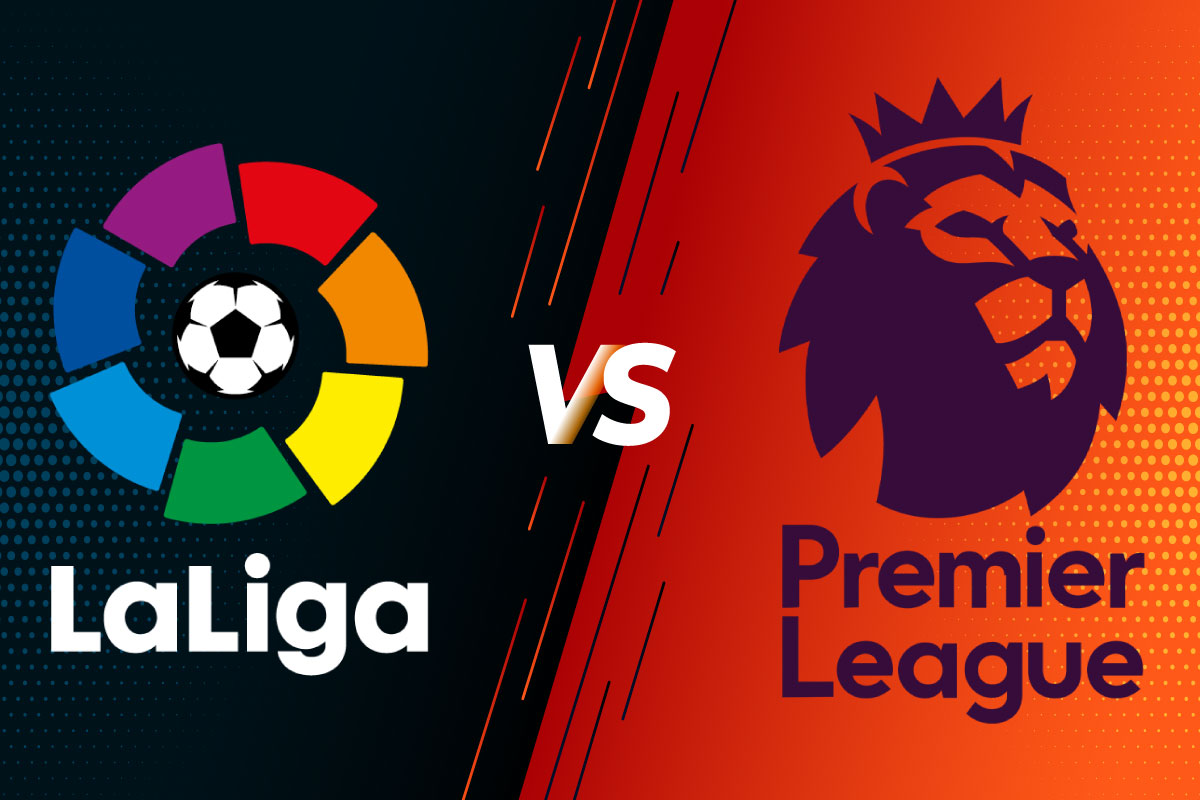Football, or soccer as it’s known in some regions, is more than just a sport; it’s a global phenomenon. Among the numerous leagues around the world, Spain’s La Liga and England’s Premier League stand out as two of the most prestigious. Each boasts a rich history, intense rivalries, and a plethora of world-class talent. This article delves into a comparative analysis of La Liga and the Premier League, exploring aspects such as competitiveness, style of play, financial power, and global reach.
Historical Context

Both La Liga and the Premier League have storied pasts that greatly influence their current standing in the football world.
- La Liga: Founded in 1929, La Liga has long been home to some of the greatest clubs in history, including FC Barcelona and Real Madrid. These clubs have dominated the league, with Barcelona and Madrid winning over 80% of the titles since the league’s inception.
- Premier League: Established in 1992 as a breakaway from the Football League, the Premier League quickly rose to prominence, attracting considerable media attention and investment. Teams like Manchester United, Liverpool, and Arsenal have played pivotal roles in shaping its reputation.
Competitiveness
One of the most distinguishing factors between the two leagues is their level of competitiveness.
- La Liga: Historically, La Liga has been viewed as less competitive, primarily due to the dominance of just a few clubs. Real Madrid and Barcelona have frequently outclassed their rivals, making it challenging for other teams to mount serious title challenges. For example, between 2009 and 2019, the title was won by either Barcelona or Real Madrid every season.
- Premier League: In contrast, the Premier League is known for its unpredictability. Clubs like Manchester City, Chelsea, and Liverpool have emerged as serious contenders, leading to seasons where multiple teams vie for the title. The 2015-2016 season, where Leicester City won the league against all odds, stands as a testament to this competitiveness.
Style of Play
The playing styles in La Liga and the Premier League are distinctly different, reflecting their unique footballing cultures.
- La Liga: Generally characterized by a possession-based style, La Liga clubs emphasize technical skill, intricate passing, and tactical nuances. The influence of legendary managers like Pep Guardiola and the success of teams adopting the tiki-taka style have made this approach popular.
- Premier League: The Premier League is often defined by its physicality, pace, and directness. Teams like Liverpool under Jürgen Klopp have showcased high-pressing football, while others, like Manchester City, blend technical ability with speed and attacking flair.
Financial Power and Commercial Success

Financial stability and commercial success are crucial aspects of both leagues, influencing their ability to attract top talent and invest in infrastructure.
- La Liga: While La Liga clubs have historically struggled with financial management, recent reforms have improved their economic standing. However, the league still heavily relies on broadcasting rights and sponsorship deals, particularly from its top clubs. The 2021-2022 season saw La Liga generating approximately €3.3 billion in revenue, with a significant portion coming from international broadcasting rights.
- Premier League: The Premier League is often considered the wealthiest league in the world, with immense broadcasting deals and sponsorship agreements. For the 2021-2022 season, the Premier League reported revenues exceeding £5 billion, largely due to its lucrative TV rights deals. This financial clout enables clubs to attract global superstars and build world-class facilities.
Global Reach and Fanbase
Both leagues have extensive global followings, but the scope and nature of their fanbases differ significantly.
- La Liga: La Liga enjoys a massive following in Spain and Latin America, with many fans identifying deeply with their local clubs. The league’s stars, such as Lionel Messi and Cristiano Ronaldo, have historically attracted global attention, but its reach can sometimes be limited compared to the Premier League.
- Premier League: The Premier League has effectively marketed itself as a global brand, boasting a diverse fanbase worldwide. Its matches are broadcast in over 200 countries, reaching millions of viewers. The league’s appeal is amplified by its variety of teams and players from different nationalities, fostering a sense of inclusivity.
Player Development and Youth Academies

Both La Liga and the Premier League have made substantial investments in youth development and academies.
- La Liga: La Liga is renowned for its academies, particularly FC Barcelona’s La Masia and Real Madrid’s La Fábrica. These academies have produced numerous world-class players, emphasizing technical skills and a deep understanding of the game from a young age.
- Premier League: The Premier League has also invested heavily in youth development, with clubs building state-of-the-art training facilities and academies. While the league has produced talented players, it has faced criticism for prioritizing immediate success over youth development, resulting in young talents sometimes being overlooked for seasoned players.
Case Studies: Notable Clubs

Examining specific clubs can provide further insights into the strengths and weaknesses of both leagues.
- Barcelona (La Liga): A prime example of La Liga’s strengths, Barcelona has not only dominated the league but has also been a beacon of attacking football and player development. Their commitment to youth, highlighted by the rise of players like Xavi and Iniesta, showcases La Liga’s emphasis on nurturing talent.
- Manchester City (Premier League): City has transformed into a powerhouse in the Premier League, showcasing a blend of financial power and innovative football tactics. Under Pep Guardiola, they have dominated domestic competitions, illustrating the league’s capacity for competitive evolution.
The comparative analysis of La Liga and the Premier League reveals two leagues that, while both exceptional in their own right, embody different philosophies, styles, and levels of competitiveness. La Liga, with its rich history and technical prowess, represents a unique footballing culture steeped in tradition. In contrast, the Premier League’s financial strength and unpredictable nature highlight its appeal as a truly global sporting spectacle. As football continues to evolve, both leagues will undoubtedly play significant roles in shaping the future of the sport, each offering distinct experiences for players and fans alike.
In summary, whether one favors the tactical depth of La Liga or the exhilarating unpredictability of the Premier League, both leagues will continue to captivate the hearts and minds of football enthusiasts around the world.




